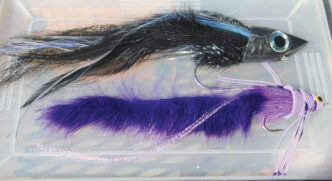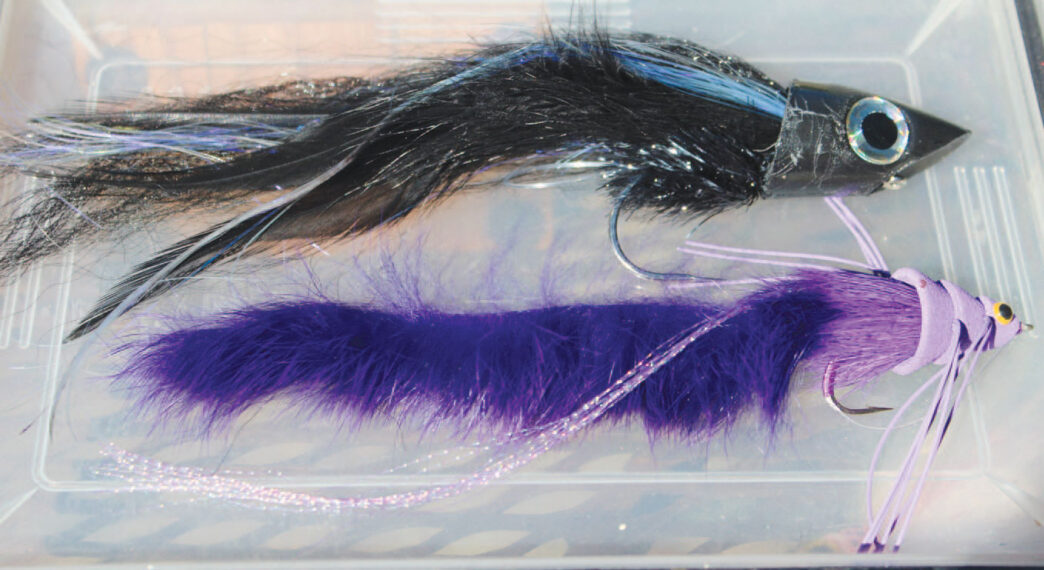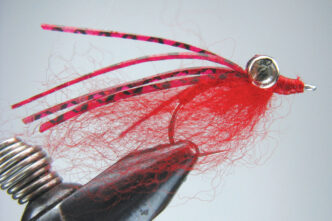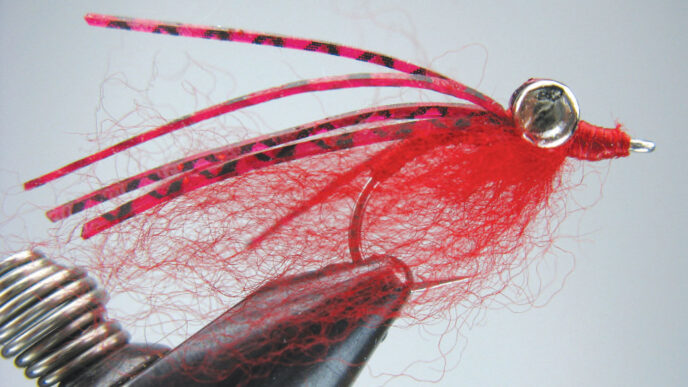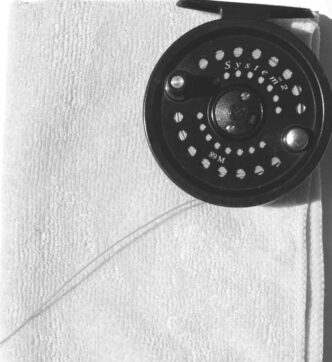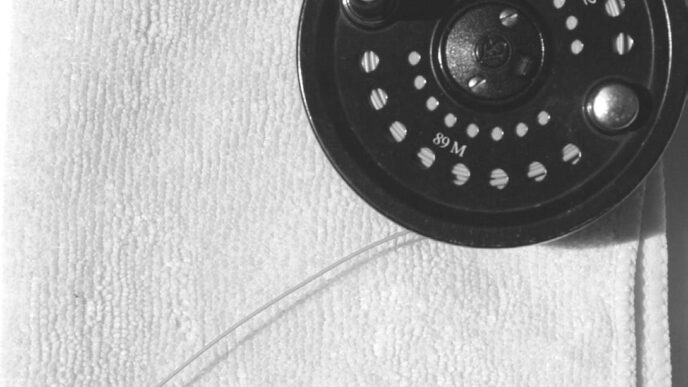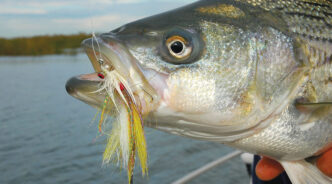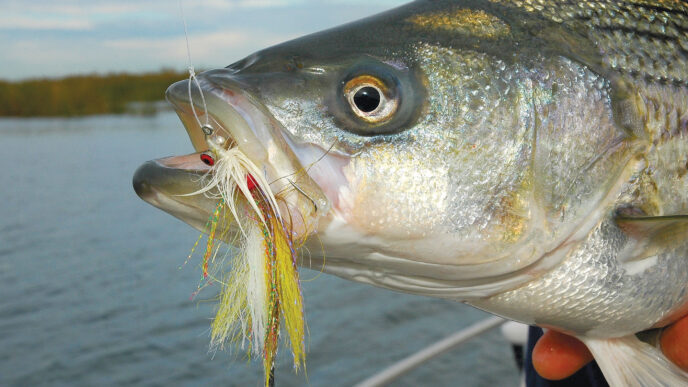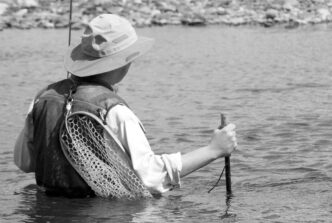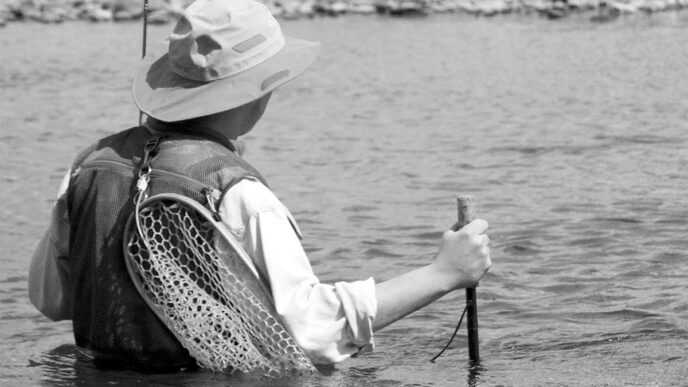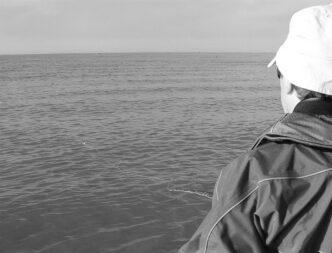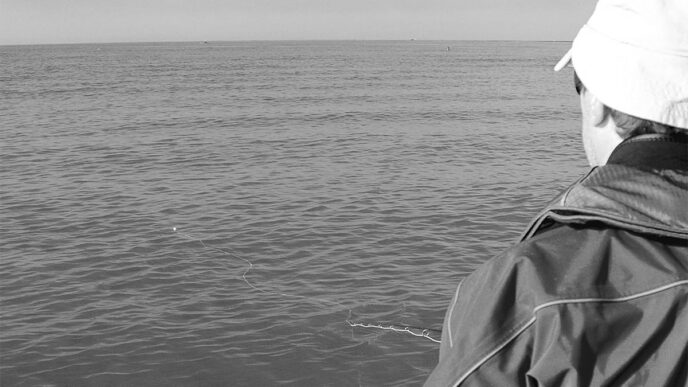As spring arrives, bass are staging and getting ready to move from deeper waters to shoreline areas, and that offers all kinds of opportunities for the stillwater fly fisher. For many of us, bass waters are closer to home than distant trout streams, and in ever-increasing numbers, we are making use of this fly rodding resource. In fact, I make a point of going bass fishing on opening day of trout season. Bass are found from the oxbows and backwaters of the lower Colorado River to beyond the Oregon border. I’ve fished for them in foggy coastal lagoons within earshot of crashing breakers and at the 6,000-foot elevation around Truckee. Northern largemouths, Florida-strain largemouths, smallmouth bass, northern spotted bass, Alabama spotted bass, rock bass, redeye bass, and warmouth bass are found within the boundaries of California. Warmouths even live in the creek that runs in front of my home in Grass Valley, along with brook trout and browns.
In the last five years, there have been exciting breakthroughs in tackle for fly-rod anglers to target bass. (See “Fly Fishing the Upper Water Column for Largemouth, Smallmouth, and Spotted Bass,” California Fly Fisher, March/April 2010 and “Gearing Up for Bass, California Fly Fisher, May/June 2012). Fly rods and fly lines designed to cast large, aerodynamically challenged flies have appeared on the scene, for example. And at the same time, there has been an explosion of innovative fly patterns for targeting bass.
Most are fly-rod versions of famous conventional patterns, such as the spinnerbait or the Jitterbug, and new synthetics, combined with traditional materials, have allowed tyers to create fly-rod versions of some of the most successful conventional bass lures. Let’s look at a few of these flies and see what they can do.

Charlie Bisharat’s much-anticipated Pole Dancer made waves when it appeared on the local fly-fishing scene. His pattern uses a lightweight molded-resin head to give the fly a seductive zigzag motion similar to the famous Zara Spook crankbait and allows an angler to “walk the dog” — make the fly move from side to side like a baitfish in distress The Pole Dancer comes in three sizes: 2, 1/0, and 2/0. I’ve found that the midsize and larger size best achieve the fish-enticing zigzag. As with the Zara Spook, to walk the dog, you need to use a Nonslip Loop Knot that has an opening of at least three-quarters of an inch, supple leader material, and a series of sharp, strong, hard pulls. It takes practice to get the motion down, and for the larger sizes, you need a 10-weight rod with an aggressive-taper weight-forward floating line, but the fly can be deadly. I also use the pattern for stripers in the Delta and on the Feather River, favoring the black and rainbow-colored versions. (You can see a nifty video of Charlie Bisharat discussing and fishing the Pole Dancer at http://www.youtube.com/watch?v=xJT5ei8WEvQ.) Prices for this fly are up there with the expensive, realistic swimbaits, but if you tie your own, you can buy comparable heads from Feather-Craft.
A similar pattern from Rainy’s Flies is the Tsunami. It’s a tad shorter than the Pole Dancer and uses a bunny strip instead of hair and tinsel behind a foam nose cone that has rubber legs. It’s difficult to get any side-to-side motion with this one, but the wiggling bunny strip tantalizes bass. This fly has a weed guard and is perfect for fishing heavy tules. Again, you need a 10-weight. This fly in black or purple is the best one that I have found for Davis Lake, in Oregon. The Tsunami is a bear to cast, but is effective in heavy cover, particularly as the light is fading.
The most interesting of Umpqua’s new bass flies are Brian Schmidt’s ultralight Schmidterbug and Schmidterbait. They are fly-rod versions of the famous Jitterbug crankbait and the conventional bass angler’s metal, wire, and rubber spinnerbait.

The Schmidterbug uses a lightweight contoured foam lip molded onto a foam popper body to imitate the metal lip that makes the Jitterbug walk and chatter when retrieved. On the pause, it slips to either side. An ostrich, marabou, and tinsel tail undulates seductively. With practice, an angler can make this bug dance. Schmidt’s fly has a single upturned hook that, in my experience, always lands upright and makes the bug weedless. It’s well constructed and casts nicely with larger rods and heavier lines, such as an aggressive 330-grain bass taper. I like the tandem legs on each side — they are bass magnets.
The Schmidterbait fly-rod version of the bladed spinnerbait is effective in roiled water, springtime conditions, and over weed beds. I like this pattern because it is smaller than the conventional-tackle version and enters the water with less disturbance than large conventional spinnerbaits, which spook fish at times. The jighead part has a tail made from olive and black marabou and ostrich that gyrates like a belly dancer. The small spinner flashes on any movement.
The late Richard Alden Bean often wrote about another effective fly tied to emulate a conventional bass lure — the Calcasieu Pig Boat. I first stumbled on this fly in a 50-cent bin at Sportsman’s Warehouse. The pattern was created in 1951 by Tom Nixon, a Louisiana outdoor writer and bass fisherman, to imitate the Hawaiian Wiggler. It is basically a Woolly Bugger with a jig-rubber hackle that trails back beyond the hook bend. It looked to me as if it could be a platform for a fly idea that I was working on.
I’m a retired dentist and have worked with fine latex dental dam material that is put over a tooth to keep it dry. I thought this flexible material would make a good trailer for a bass fly. I had in mind the pork rind trailer that was most often hung on the hook of a Johnson Silver Minnow spoon or as an addition to a “pig and jig” rig. The real pork rind comes in a screwtop jar with brine preservative — unlike the dam material, it’s heavy and can be up to three-sixteenths of an inch thick. I outlined a frog-shaped pattern and cut pieces from black or green rubber dam sheets. I used larger wide-gap hooks and tied a Pig Boat using ultraviolet-reflecting Polar Chenille for a body that would push water and 12 strands of fine jig rubber for a wing. My trailer is hung on the hook bend. I tie the fly in black, purple, crawdad, and chartreuse/white and have a twister-tail version that can be hung on the shank of a Woolly Bugger. Tease it down a sloping bank using a floating line and a 9-foot 0X tapered leader. Ask your dentist for a few sheets of latex dam material on your next visit.

The Gummy Minnow is a flyrodder’s version of the plastic swimbait. It’s a cross between a fly and a lure and has been said to have taken every species of fish. I discovered its effectiveness on a trip to Mexico’s El Salto Lake . . . hallowed ground for bass anglers. Our group was the second wave sent to explore the fly-rod possibilities of this legendary 44,000-acre lake in the western Sierra Madre Mountains. Using a Gummy Minnow, our trip host, Jim
Christensen, outfished two Florida tournament pros who relied on conventional gear. You can tailor its length from one to four inches or more, depending on the size of forage fish. It has the flash, action, and feel of a baitfish.
On that same trip, the Crease Fly proved its mettle. El Salto’s bass like it with a hint of yellow. Two of our boats unsuccessfully fished a bay that had threadfin shad bait boils everywhere. After an hour of frustration, I remembered a friend’s experience at San Luis Reservoir. I picked up a rigged 8-weight rod that carried a 290grain, 7-1/2 inch-per-second sink-rate integrated shooting head. I shortened the leader to 4 feet and tied on an ochre-tinted Crease Fly with a Loop Knot.
Cast, count it down, then start your retrieve. Pause for at least 10 seconds and start retrieving again. When the slightly buoyant Crease Fly is fished on a sinking line, your pause allows the fly to rise like a wounded shad. With the new rig, I hooked three monstrous fish on five casts, landing one. The smaller fish were feeding on top, working the bait boils. The larger ones, “seis kilos” according to my guide Pedro, waited below for the sinking, injured, struggling baitfish.

Today, bass flies even work like what we used to call “plugs”: Blane Chocklett’s Game Changer swims like the legendary Rapala crankbait. Game Changers have a lifelike undulating, wiggling action that is the key to getting educated fish to take an artificial. Google “Game Changer” and watch the amazing action of this fly on the YouTube video. The Game Changer is tied on Fish-Skull Articulated Fish-Spine segments from the Flymen Fishing Company. It also has tightly palmered UV White Minnow Body Wrap, trimmed to mimic the shape of a baitfish, and colored with Pantone pens after the addition of large plastic eyes.
The role of ultraviolet light reflected from emerging insects as well as baitfish is getting a lot of attention. I attended a lecture by stillwater guru Denny Rickards at the January Sacramento International Sportsmen’s Exposition and talked with him at length afterward about the effects of ultraviolet light in flies. He told of a new product, Spectrum Response U/V Spray, that reflects UV light when sprayed on fur and feathers. I bought a bottle.
We’ve come a long way from fur, feathers, cork, and silk thread, haven’t we? Why not tie a large Game Changer, trim and color it to look like a planted hatchery-reared rainbow trout, spray it with Spectrum Response, and go after that world-record bass.



